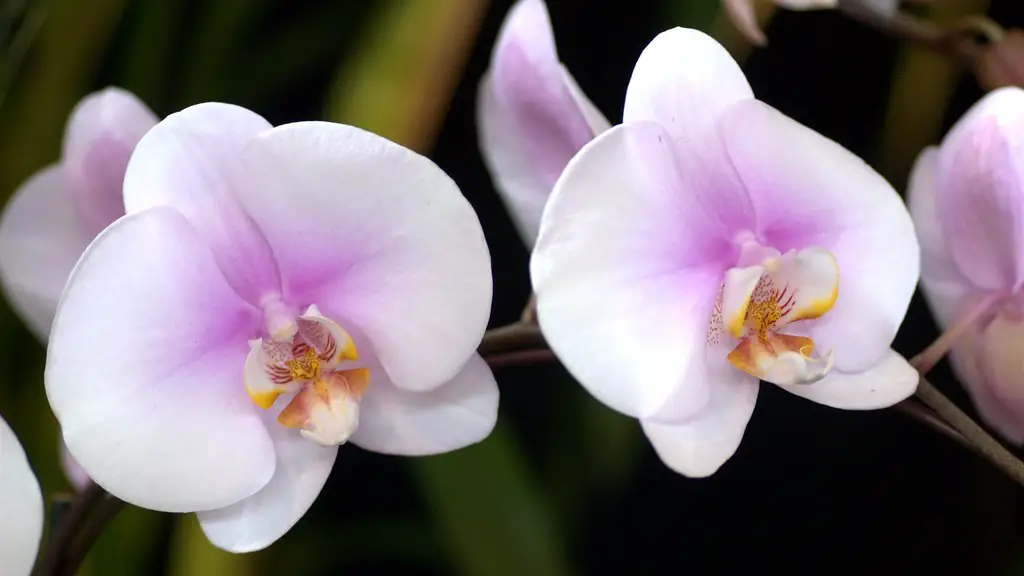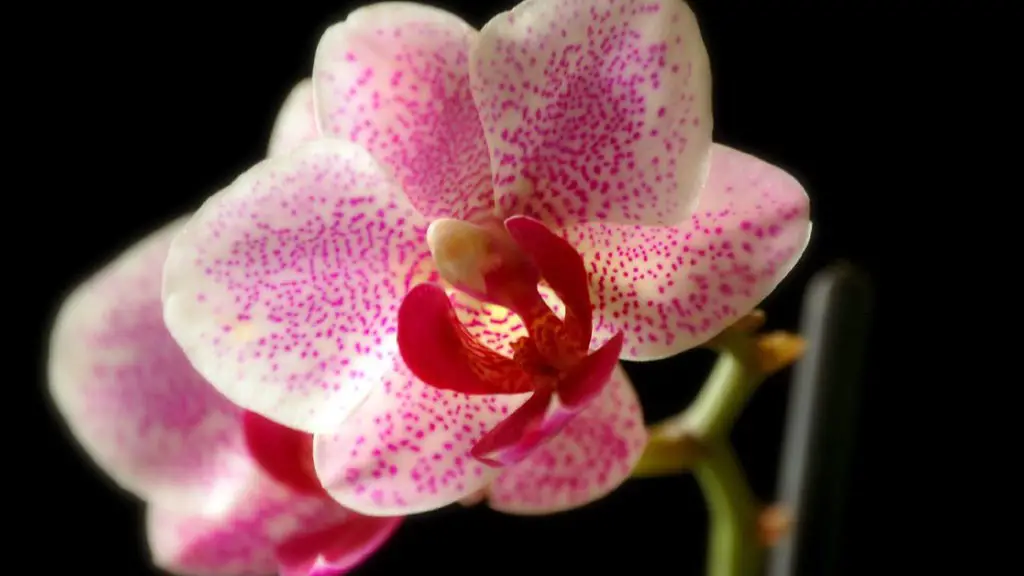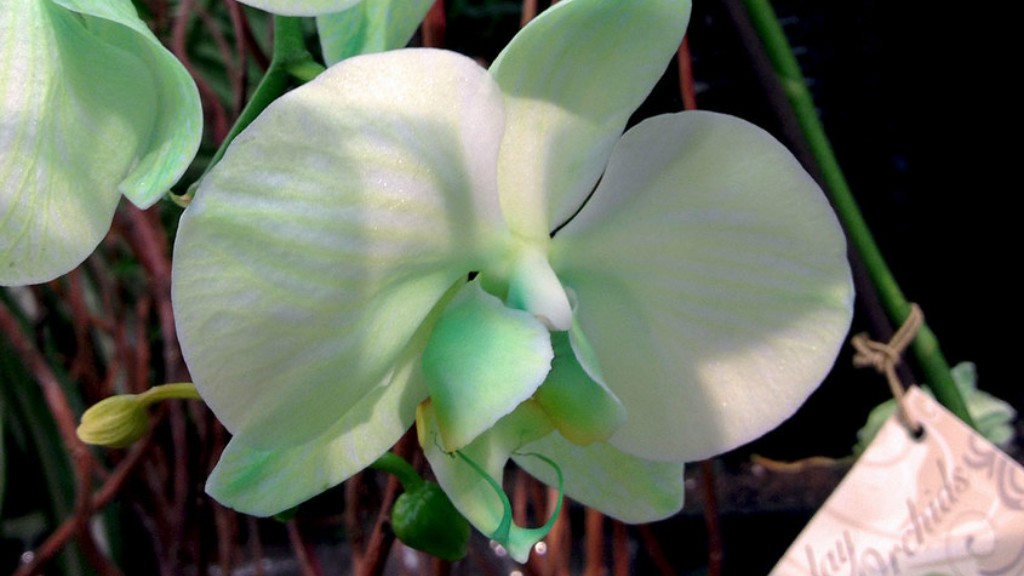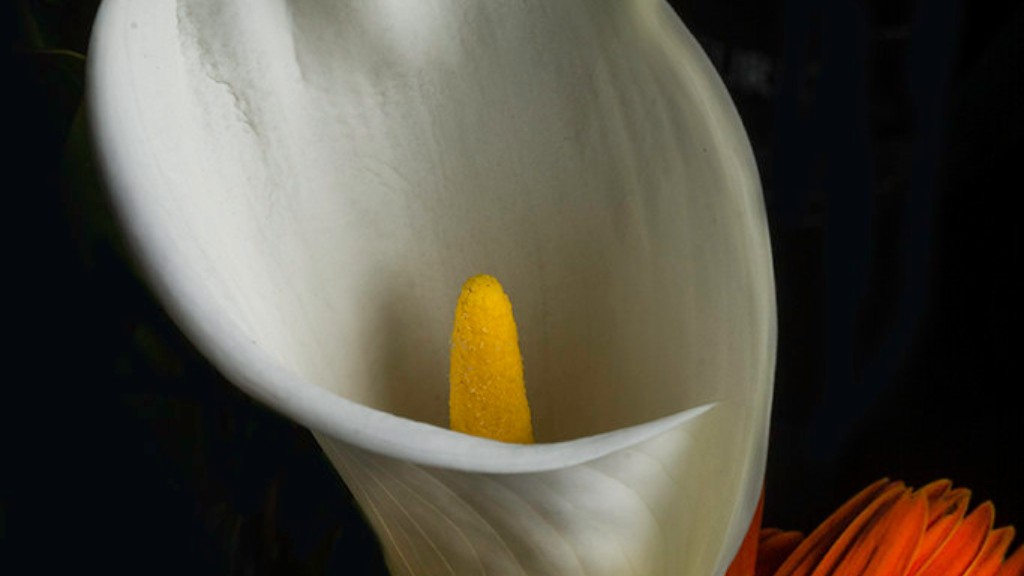There are a number of reasons why your Phalaenopsis orchid flowers may be drooping. It may be because the plant is not receiving enough light, or it may be because the roots are too wet or too dry. If you suspect that the plant is not getting enough light, move it to a brighter location. If you suspect that the roots are too wet or too dry, check the roots and adjust the watering accordingly.
The reasons for why your Phalaenopsis orchid flowers may be drooping can be many and varied. Some possible reasons include:1) The plant is not getting enough water and is suffering from dehydration. Make sure to water your orchid regularly, especially during its blooming period. 2) The plant is not getting enough light. Orchids need bright, but indirect light in order to bloom well. If your orchid is not getting enough light, it may drop its flowers. 3) The plant is suffering from a nutrient deficiency. Make sure to fertilize your orchid regularly, using a high-quality fertilizer designed specifically for orchids. 4) The plant is stressed from too much heat or too much cold. Orchids like relatively warm temperatures, so if the plant is exposed to too much heat or too much cold, it may drop its flowers. 5) The plant is suffering from a pest or disease problem. Inspect your orchid carefully for signs of pests or diseases, and treat accordingly.
Why are my Phalaenopsis flowers wilting?
If you notice that your orchids’ flowers are getting wrinkly and the flower veins are showing up and wilting, it means that they are not getting enough water. In worse cases of dehydration, the leaves will be discolored, dull, thinned out, floppy, soft and rubbery. Make sure to water your orchids regularly to prevent this from happening.
If your orchid’s flower spike is drooping and discolored, with brownish edges, it’s time to remove the flower. Many orchids have more than one bloom on a stem-like spike, so you may not need to remove the entire spike.
What does it mean if your orchid flowers are drooping
If your flowers are wilting, it may be because the humidity has changed. Orchids, in particular, need to be misted more often if they are in dry conditions. Remember that humidity is not the same as watering. Humidity is the overall concentration of water droplets in the air, while watering is how much the roots absorb.
Your orchid is probably not dead, even though the blooms have fallen off. It is likely entering into a new phase of its perfectly healthy lifestyle. Just as trees shed brown leaves come winter—only to sprout new, green life in the spring—your orchid can bloom again with the proper coaxing.
What does an overwatered orchid flower look like?
Orchids are a beautiful and popular plant, but they can be finicky. One of the most common problems with orchids is overwatering, which can lead to yellowing leaves, limp leaves, and pleated new leaves. If you suspect your orchid is overwatered, take a look at the leaves. Healthy orchid leaves will be green, shiny, and firm. Overwatered orchids will have leaves that look limp or sometimes leathery depending on the species. The existing leaves may begin turning yellow, and new leaves may look pleated. If you see these signs, stop watering your orchid and let the plant dry out. Once the leaves are back to normal, you can resume watering, but be sure to water only when the potting mix is dry.
If your orchid’s roots are looking mushy and have very little substance, it’s likely because they are overwatered. Orchid roots are generally only bright green right after they have been watered and will turn silvery green after a few days. If they are still bright green and you haven’t watered them recently, they may be getting too much water.
How do you fix droopy orchids?
Temperature stress can cause your orchids to droop and lose leaves. To help them recover, move them to a shaded location with good air circulation and high humidity. You can cut off any severely drooping leaves. If the damage is extensive, you may need to repot the plant. Water the plant regularly, but only give it a little water at a time.
When you see that your orchid’s bottom leaves are yellow and wilted, and its buds are falling off instead of opening, it means that your orchid is dehydrated. To hydrate your orchid, water it thoroughly and then place it in a shady spot to rest.
What does an orchid look like when it needs to be repotted
Orchids are a type of plant that prefers to have a small pot. The roots of the orchid will weave through the compost as it grows. However, eventually the orchid will run out of room in the pot. This is when the roots will push the plant up above the rim of the pot or reach out into the air. This is a sure sign that it is time to re-pot the orchid.
The microclimate of higher humidity helps prevent heat stress and aids stressed plants in recovering.
Heat stress is a major problem for many plants, especially during the summer months. The hot, dry weather can cause leaves to wilt, flowers to fade, and overall plant growth to suffer.
One way to combat heat stress is to create a microclimate with higher humidity. This can be done by misting the leaves, setting up a humidifier, or placing the plants in a tray of water. The extra moisture will help the plants to recover from the stress of the heat.
Signs of Heat Stress
There are several signs that a plant is suffering from heat stress. These symptoms may appear singly, even in otherwise fairly healthy orchids.
Yellowing of Plants and Leaves: One of the first signs of heat stress is yellowing leaves. The leaves may turn completely yellow, or they may just have yellow patches.
Withered Leaves: Another symptom of heat stress is withered leaves. The leaves may appear dry and brown, and they may fall off the plant.
Sunburn: Another sign of heat stress is sunburn. The leaves of the plant may appear red, cooked, or blistered.
What does a dying orchid flower look like?
If you see that the crown of your orchid is brown and mushy, it is likely dead. This usually happens when the plant has been watered too much.
If you’re not sure whether or not to water your plants, it’s always better to err on the side of too little water rather than too much. Over-watering is a common cause of plant problems and can lead to root rot, crown rot, and other issues. A good rule of thumb is to water every 7-10 days, or when the soil mix appears dry.
Do orchids need direct sunlight
Orchids are a beautiful, delicate type of flower that can brighten up any room. Although they are known for being finicky and difficult to care for, with the right knowledge, anyone can successfully grow these amazing plants.
One important thing to remember is that orchids thrive in strong light, but direct sunlight can actually burn the leaves. The best type of light for orchids is bright, indirect light from an eastern or southern window. Another thing to keep in mind is that the leaf color is a good indicator of the amount of light the plant is getting. Bright green leaves mean that the plant is happy and healthy, while yellow or brown leaves indicate that it is not getting enough light.
With proper care and attention, any home can become a haven for these stunning flowers.
If you have an orchid in bloom, it’s important to continue watering it on a regular basis. This will help the plant tostay healthy and promote new growth. Keep an eye on the soil and water when it starts to dry out. With some types of orchids, such as Phalaenopsis and Paphiopedilums, it’s best to keep the soil evenly moist.
What does an unhealthy orchid look like?
If you notice that your orchid’s leaves are turning brown or mushy, it is a sign that the plant is root bound and is not getting enough water. Move the plant to a brighter location and make sure to water it more frequently.
It’s perfectly fine to water your orchid with regular tap water, as long as the water isn’t softened with salts. Room temperature water is best for the plant, but you can also use ice cubes without harming the plant. About once a week, place up to three ice cubes on top of the potting medium, making sure that the cubes don’t touch the leaves.
What do orchids look like when they need water
If you’re worried about your leaves yellowing and falling off, there are a few things you can do to help. First, make sure they’re getting enough water. Yellowing can be a sign of dehydration, so make sure to water your plants regularly. Secondly, check the soil. If the soil is too acidic or alkaline, it can cause the leaves to yellow. You can test the pH of the soil with a test kit from your local gardening store. Finally, make sure your plants are getting enough light. If they’re not getting enough sunlight, they may start to yellow. If you think your plant is yellowing due to one of these reasons, try adjusting accordingly and see if the problem goes away.
If you are looking for the best place to water your plants, the kitchen sink is a great option! Use lukewarm water (do not use salt softened or distilled water) and water your plant for about 15 seconds. Be sure to thoroughly wet the media and then allow the plant to drain for about 15 minutes. It may appear dry, but it has had enough water.
Warp Up
There are a few reasons why your Phalaenopsis orchid’s flowers might be drooping. One possibility is that the plant isn’t getting enough light. Phalaenopsis orchids need bright, indirect light to thrive, so if yours is sitting in a dark corner, that could be the problem. Another possibility is that the plant is getting too much water. Orchids like to be kept on the dry side, so if you’re watering yours too often, that could be causing the flowers to droop. Finally, it could just be that the flowers are past their prime and starting to fade. If that’s the case, you can simply remove the flowers and enjoy the plant’s lush green foliage.
The most likely reason for your orchid’s drooping flowers is that they are not getting enough light. Phalaenopsis orchids need 14-16 hours of light per day, so if your plant is not getting enough light, the flowers will droop. Another possibility is that the plant is not getting enough water. Orchids should be watered every 7-10 days, and if the plant is not getting enough water, the flowers will droop.





